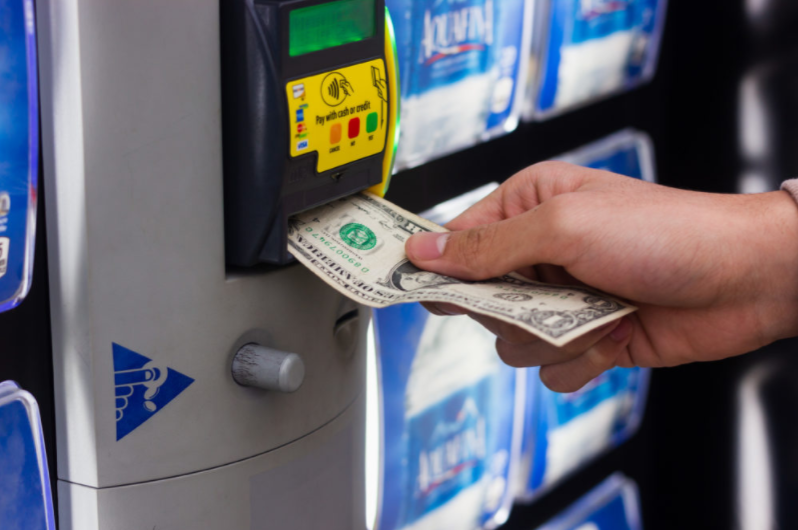
By Justin Hsieh, Staff Writer
If you’ve ever needed to stave off fourth-period starvation or quench post-practice thirst, odds are you’ve relied on one of the 18 vending machines on campus at Fountain Valley High School (FVHS). Have you ever considered where that dollar you gladly exchanged for a Gatorade goes?
For a Gatorade, the answer is simple. All beverage vending machines on campus are owned and stocked by PepsiCo, the corporation that owns the Gatorade, Aquafina, Propel and Bubly brands sold on campus. PepsiCo collects money from the machines and pays the school a 30 percent commission of the sales. This system applies to all the comprehensive high schools in the Huntington Beach Union High School District (HBUHSD).
“The portion of the beverage sales that comes back to the school goes to the Associated Student Body (ASB) and is then used for school-wide ASB events such as dances, lunch-time activities, [and] athletics,” said FVHS Assistant Principal of Activities and Athletics Kelly Skon.
Baron Banner contacted the financial offices of all six comprehensive high schools in the HBUHSD seeking records of beverage vending revenue. The FVHS financial office did not provide this information, but it was available at Huntington Beach High School (HBHS) and Edison High School (EHS). According to Assistant Principal Jason Ross, EHS has received less than $200 in vending machine sales this school year. HBHS ASB Bookkeeper Joyce Walder reported that in the past five months, the school received $1145.04 in commission on sales from its three beverage machines. FVHS has ten beverage vending machines.
But beverage sales revenue hasn’t always been distributed in this way. Prior to this fiscal year, PepsiCo sent revenue from beverage vending machines at all school sites in the district directly to the HBUHSD Food and Nutrition Services Department. This department also received revenue from snack and ice cream vending machines at all six school sites.
According to Food and Nutrition Services Administrator Lauren Teng, the revenue that Food and Nutrition Services received from the vending machines at each school was credited back to that school’s cafeteria and used to pay for “utilities, repairs, wages, and supplies for meals for students,” per state and federal spending regulations.
The Baron Banner submitted a public records request to the HBUHSD Public Information Office seeking records of Food and Nutrition Services’ vending revenue from FVHS for the past four complete fiscal years. According to the account statement provided by Teng, Food and Nutrition Services received $64,630.17 from snack vending, $4,072.45 from ice cream vending, and $11,075.08 from beverage vending from 2014-2018. At FVHS, this revenue was used to fund repairs for refrigerators, ovens and dish machines as well as unpaid meal balances and food and beverages for meals.
Last year, beverage vending contracts at all six schools were renegotiated directly between each school site and PepsiCo. Snack and ice cream vending machines remain under operation via a contract between the HBUHSD and two local vendors, G&N Vending (for snacks) and Advance Vending (for ice cream). These vendors service all six schools and send commissions to Food and Nutrition Services.
“The terms of the food and ice cream contracts expire this fiscal year,” said FVHS Principal Morgan Smith. “After that, we’re hoping to negotiate new contracts [directly with the vendors].”
Until then, you know that your Gatorade helps fund the Glow Show and other ASB activities, and your cookies help keep the cafeteria running.
This article was originally published in the February 2019 issue of the Baron Banner.
Since the original publication of this article, Baron Banner received a reply from Lauren Teng including information that expanded and clarified some of the previous reporting in this article. The article was updated on March 29, 2019, to include district revenue amounts and to include Teng’s explanation that district-gathered funds were credited to the schools they came from.





